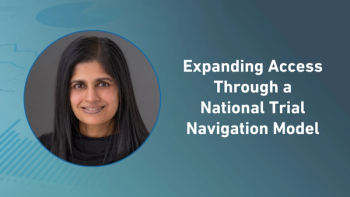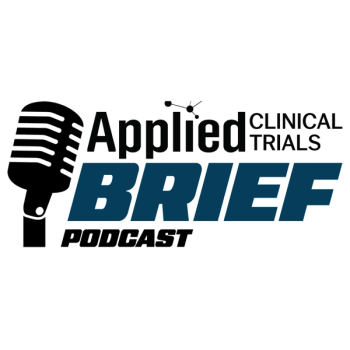Topline Findings
- FDA Breakthrough Therapy Designation (BTD): I-DXd (ifinatamab deruxtecan) receives FDA BTD for pretreated extensive-stage small cell lung cancer, underscoring its potential as a novel therapeutic option.
- Clinical Trial Momentum: Phase II IDeate-Lung01 and Phase I/II IDeate-PanTumor01 data support the BTD, with late-breaking results to be presented at IASLC 2025 World Conference on Lung Cancer.
- First-in-Class Potential: I-DXd is a B7-H3 directed antibody drug conjugate that could become the first therapy of its kind to improve outcomes in aggressive lung cancer.
The FDA has granted Breakthrough Therapy Designation (BTD) to Merck’s and Daiichi Sankyo’s ifinatamab deruxtecan (I-DXd) for adult patients with extensive-stage small cell lung cancer (ES-SCLC) whose disease has progressed following platinum-based chemotherapy.
The FDA’s decision was based on results from the Phase II IDeate-Lung01 trial (NCT05280470), with additional support from the Phase I/II IDeate-PanTumor01 trial (NCT04145622). Full results are expected to be presented in a late-breaking oral session at the International Association for the Study of Lung Cancer 2025 World Conference on Lung Cancer.1
What Makes I-DXd a Potential First-in-Class Therapy?
“This Breakthrough Therapy Designation granted by the FDA to ifinatamab deruxtecan highlights the urgent need for new treatment options for patients with pretreated extensive-stage small cell lung cancer,” said Ken Takeshita, MD, global head, R&D, Daiichi Sankyo, in a press release. “We are committed to advancing this medicine with the goal of bringing the first B7-H3 directed antibody drug conjugate to patients in order to transform the outcomes of those facing this aggressive disease.”
IDeate-Lung01 Trial Design and Endpoints
- The global, multicenter, randomized, open-label, two-part IDeate-Lung01 trial evaluated the safety and efficacy of I-DXd in 187 patients with ES-SCLC who were previously treated with at least one prior line of platinum-based chemotherapy and up to three prior lines of therapy.
- The trial consisted of two parts. In part 1, patients were randomly assigned in a 1:1 ratio to receive either eight or 12 mg of I-DXd intravenously (IV) every three weeks (Q3W). In part 2, patients received 12 mg of I-DXd IV Q3W.
- The primary endpoint of the trial was objective response rate as assessed by blinded independent central review per RECIST v1.1.
- Key secondary endpoints included duration of response, progression-free survival, disease control rate, time to response, overall survival, pharmacokinetics and safety.1,2
IDeate-PanTumor01 Trial Design and Endpoints
- The global, multicenter, first-in-human, open-label, IDeate-PanTumor01 trial evaluated the safety and efficacy of I-DXd in approximately 250 patients with advanced/unresectable or metastatic solid tumors that are refractory or intolerable to standard treatment.
- The Phase I portion of the trial is evaluating the safety and tolerability of escalating doses of I-DXd to identify the maximum tolerated dose and the recommended dose for expansion (RDE).
- In the Phase II dose-expansion portion, the trial is assessing both safety and efficacy of the recommended dose for expansion of 12 mg in patients with squamous non-small cell lung cancer (NSCLC), metastatic castration-resistant prostate cancer, and esophageal squamous cell carcinoma.
- The primary endpoints of the trial include evaluating the incidence of dose-limiting toxicities, adverse events, and the antitumor activity of the treatment.1,3
The Broader Lung Cancer Burden
- According to a study published by the National Center for Biotechnology Information, SCLC accounts for approximately 15% of all lung cancer cases, making it less common than NSCLC.
- Overall, lung cancer is the second most frequently diagnosed cancer in the United States but remains the leading cause of cancer-related death among both men and women.4
“Patients living with extensive-stage small cell lung cancer often have limited therapeutic options following disease progression after standard of care treatments,” said Eliav Barr, MD, SVP, head, global clinical development, chief medical officer, Merck Research Laboratories, in the press release. “This Breakthrough Therapy Designation reinforces our confidence in the promise of ifinatamab deruxtecan to play an important role in the treatment of extensive-stage small cell lung cancer, and we are looking forward to sharing data at the upcoming IASLC 2025 World Conference on Lung Cancer that show the potential of this novel option.”
References
- Ifinatamab Deruxtecan Granted Breakthrough Therapy Designation by U.S. FDA for Patients with Pretreated Extensive-Stage Small Cell Lung Cancer. Merck. August 18, 2025. Accessed August 18, 2025. https://www.merck.com/news/ifinatamab-deruxtecan-granted-breakthrough-therapy-designation-by-u-s-fda-for-patients-with-pretreated-extensive-stage-small-cell-lung-cancer/
- Ifinatamab Deruxtecan (I-DXd) in Subjects With Pretreated Extensive-Stage Small Cell Lung Cancer (ES-SCLC) (IDeate-Lung01). Clinicaltrials.gov. Accessed August 18, 2025. https://clinicaltrials.gov/study/NCT05280470
- Study of Ifinatamab Deruxtecan (DS-7300a, I-DXd) in Participants With Advanced Solid Malignant Tumors. Clinicaltrials.gov. Accessed August 18, 2025. https://clinicaltrials.gov/study/NCT04145622
- Small Cell Lung Cancer. NIH. Accessed August 18, 2025. https://www.ncbi.nlm.nih.gov/books/NBK482458/





